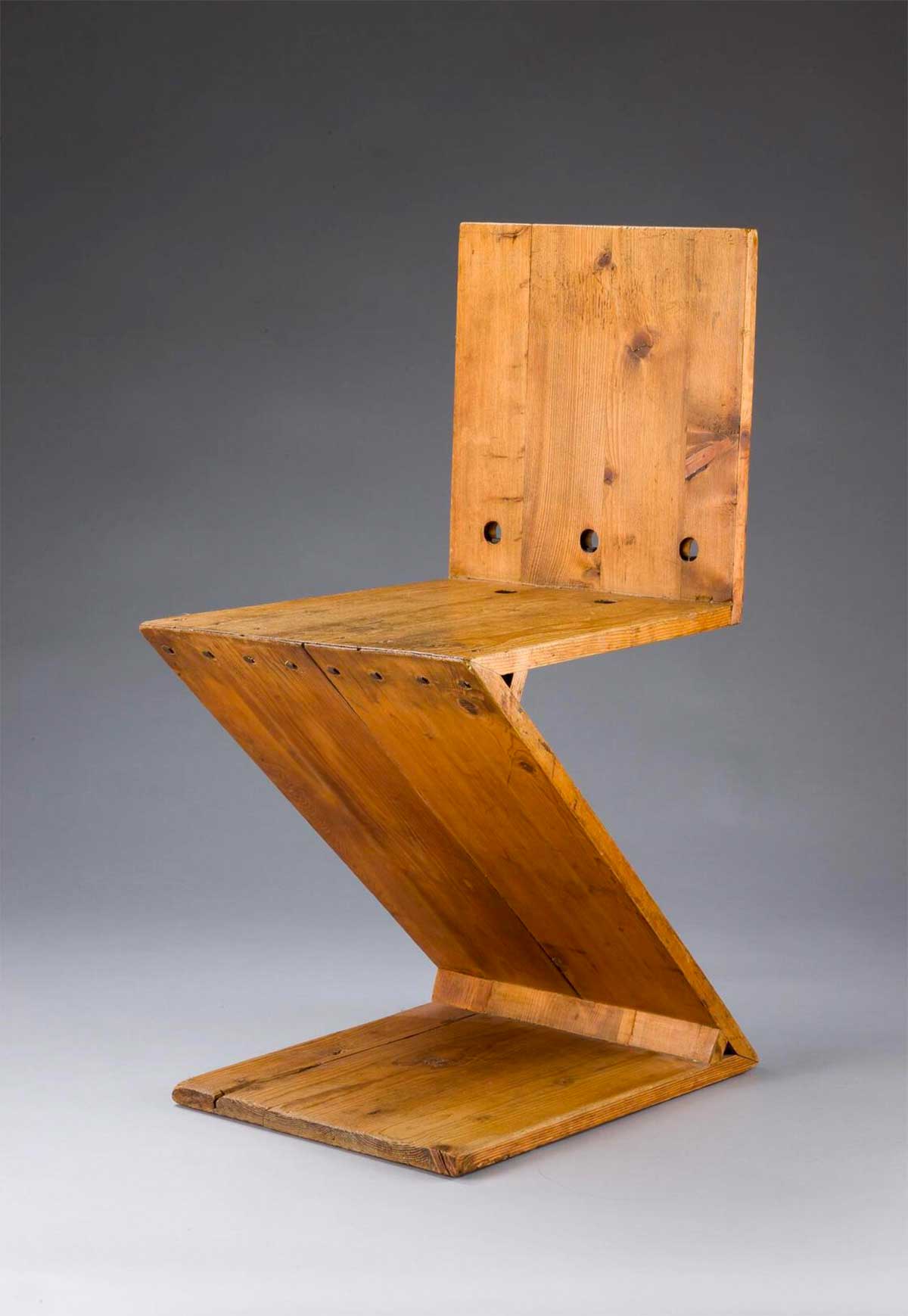Students will observe and discuss a variety of chairs and determine whether they are aesthetically pleasing, supportive, how they were constructed, etc. They will then design their own chair that can withstand space travel and being on the planet Mars. Students will do research to determine the best design.
Objectives
- Students will use context clues to make interpretations.
- Students will explain their own ideas and understanding in discussion and in writing.
- Students will research life in space and Mars.
- Students will design a chair prototype.
- Students will cite sources to back up their design rationale.
Vocabulary: aesthetic, texture, prototype, modernist/modernism
Steps

Show students Gerrit Thomas Rietveld’s Zig-Zag chair and ask them the subsequent questions, following up with “What do you see that makes you say that?” after each one:
- What materials do you think were used to make this chair?
- Does this chair look like it would support a person’s body? Why or why not?
- Who do you think is the intended user for this chair?
- In what ways is the chair aesthetically appealing to you? Explain.
- How do you think the chair was constructed?
Now show students some of these chairs:
- Tejo Remy, Rag Chair, designed 1991
- Marcel Wanders, Knotted Chair, 1996
- Jonathan De Pas, Blow Inflatable Armchair, 1967
- Unknown Congolese, Stool Chieftan’s, Hornba, 20th century
- Fred Baier, Prism Chair, 1993
- Frank Gehry, Easy chair and ottoman (“Little Beaver”), 1991
Discuss the subsequent questions, following up with “What do you see that makes you say that?” after each one:
- Which chair do you find most aesthetically pleasing? Why?
- Which chair do you think is the most comfortable?
- Which chair do you think is the most supportive?
- What do you think the texture of each chair is like?
- Do you think the chair is heavy or light?
- How did the designer plan for the user’s body to interact with each chair?
- What purpose do you think the chair was designed for?
Now instruct students to design a prototype chair for astronauts traveling to Mars. The furniture will serve many functions in environments where maximum flexibility and minimum fuss is crucial.
Things to consider:
- You’re going to have very limited space.
- There will be partial gravity—Mars has roughly one-third of Earth’s gravity—so you can make your furniture a lot lighter and weaker than Earth-bound designs.
- Astronauts come in many sizes, think adjustable.
- The chair will be used for working, relaxing, and mealtimes, so it should be comfortable.
Have students create a “furniture journal” where they keep notes about every chair they interact with for the following week. Ask students to think about why they feel the design is good or bad (is it aesthetically pleasing, comfortable, supportive, heavy, light, etc.?) and how aspects of each chair may benefit their design.
At the end of the week, students will write-up and draw their proposals. Their write-ups should include and address, at the very least, the “things to consider” and how their journals and further research led them to their final design (citing sources where available). Each student should present their findings and design to the class.
Brief Background
The Zig-Zag chair was designed in 1934 by the architect and furniture designer Gerrit Rietveld. This particular one was made in 1938. In the early 1930s, Dutch department store Metz & Co. asked Gerrit Rietveld to do something unprecedented: design a chair for mass production. The architect agreed to the challenge, proposing a Z-shaped perch. Its deceptively simple Z-form arose from his desire to create a chair from a single piece of material. When this proved impossible in various materials—metal was difficult to sit on and plywood fell apart—he resorted to durable cherrywood. It worked! The chair was surprisingly sturdy, braced by dovetail joints and an unorthodox method of bolting together planks of hardwood to give the impression of a continuous form.
Despite its jagged angles it is comfortable. There is give between the seat and legs; it softens when you sit. This was far from traditional furniture construction. The drill-holes and grain of the wood provide the only decoration to this chair, whose silhouette typified the uncompromising nature of Modernist furniture of the interwar period. The chair was, in the words of Gerrit Rietveld, “a designer joke.”